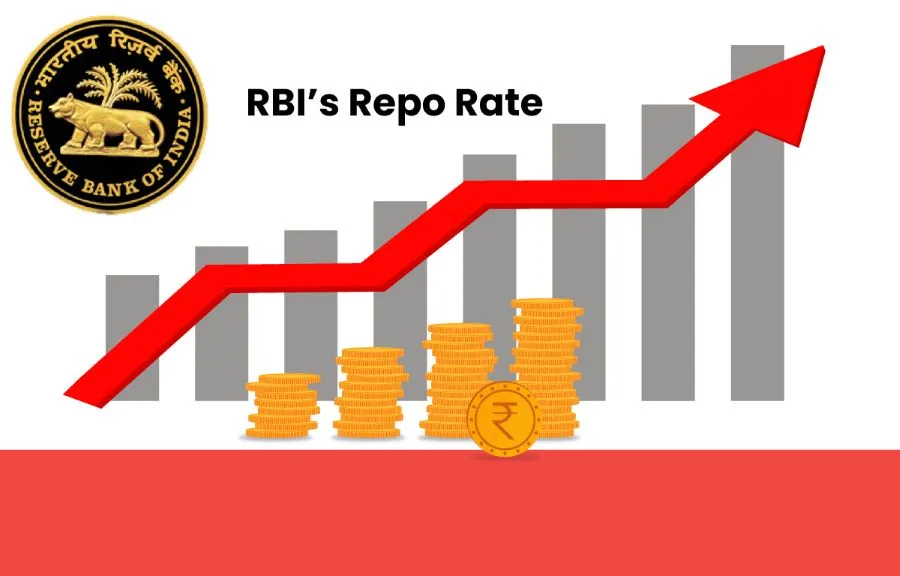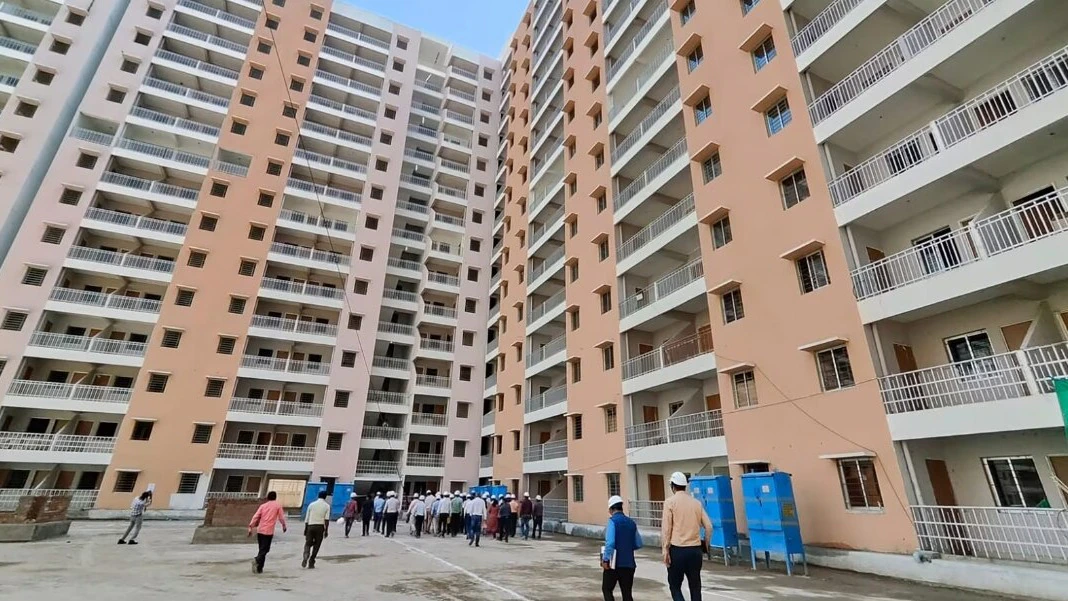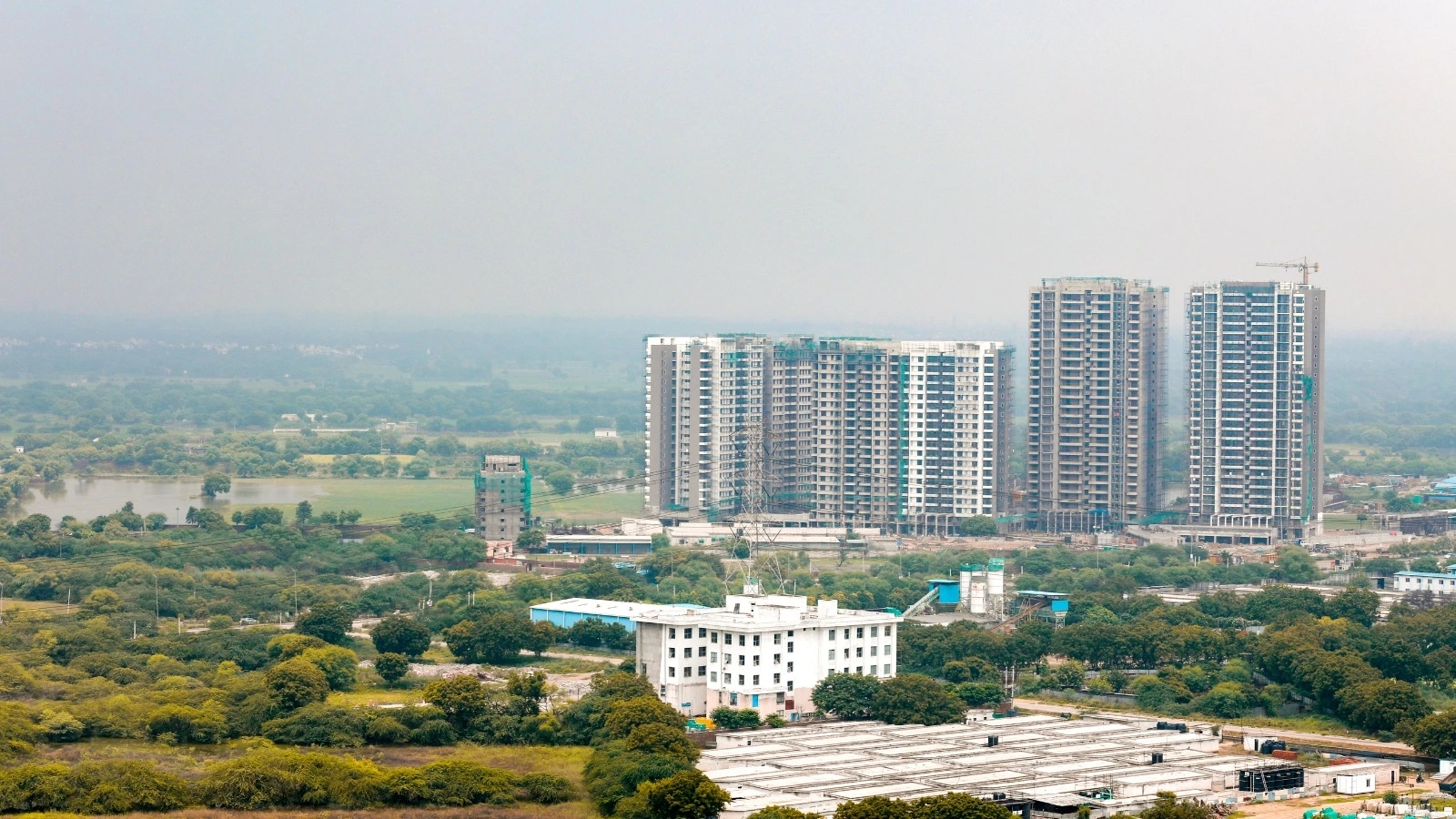Table of Content
- How changes in repo rate impact homebuyers?
- What is repo rate?
- Repo and reverse repo rate in 2024
- What is reverse repo rate?
- Difference in repo rate-reverse repo rate
- Key facts about repo rate in India
- What is monetary policy review?
- How does change in repo rate impact home loans?
- Facts about repo-rate linked home loans
- Changes to repo rate since June 2000
June 7, 2024: The Reserve Bank of India (RBI) decided to keep the repo rate steady at 6.50% on June 7, 2024. This marks the eighth consecutive time the banking regulator has maintained the status quo on its key policy rate. Additionally, the RBI has left the Marginal Standing Facility (MSF) and Standing Deposit Facility (SDF) rates unchanged at 6.75% and 6.25%, respectively. The fixed reverse repo rate remains at 3.35%.
How changes in repo rate impact homebuyers?
Whenever the RBI adjusts the repo rate, homebuyers are informed that borrowing costs will either increase or decrease depending on whether the lending rate goes up or down. Given the repo rate's significant impact on your finances, it's crucial to understand all aspects of it and how it affects your home loan liability. Additionally, understanding the reverse repo rate is essential for gaining better clarity on how your home loans work.
Also Read: Applying for a home loan - Online vs Offline: Which One Is Better?
What is repo rate?
Banks require funds for lending purposes. Besides accepting deposits from the public, they can also borrow from the central banks. Similar to how borrowers pay interest to obtain loans from banks, financial institutions must pay interest to borrow from the central bank. This interest rate is called the repo rate, short for repurchase option or repurchase agreement. In this arrangement, scheduled commercial banks provide securities, such as treasury bills or gold, to the RBI to receive overnight credit when facing a liquidity shortfall.
Repo and reverse repo rate in 2024
| Repo rate | Reverse repo rate |
| 6.50% | 3.35% |
In addition to aiding banks with credit availability, the repo rate serves as a potent tool for the banking regulator to manage inflation. During periods of high inflation, the RBI raises the repo rate to discourage banks from borrowing. This action reduces liquidity in the economy, thereby helping to curb inflationary pressures. Conversely, when inflation is low, the RBI lowers the repo rate to encourage banks to borrow more, increasing liquidity and stimulating fresh investment activity in the market.
It's important to note that the credit extended by the RBI to banks under this arrangement is short-term, typically overnight, and banks repurchase their securities deposited with the central bank at a predetermined price.
What is reverse repo rate?
The reverse repo rate represents the interest charged by banks when they lend money to the RBI. It's another tool employed by the RBI to manage inflation levels by absorbing excess liquidity from the financial system. When the RBI raises the reverse repo rate, it incentivizes banks to deposit more funds with it, thereby reducing the availability of credit in the system. This approach limits the surplus liquidity banks have available for lending purposes.
Also Read: How To Reduce Home Loan Interest Rate In 2024?
Difference in repo rate-reverse repo rate
| Repo rate | Reverse repo rate |
| The interest RBI charges to lend credit. | The interest RBI pays on borrowings. |
| Always higher than reverse repo rate. | Always lower than repo rate. |
| A tool to control inflation. | A tool to maintain cash flow. |
| Works as per repurchase agreement. | Works as per reverse repurchase agreement. |
| Transactions take place via bonds. | Transactions happen via bonds. |
Key facts about repo rate in India
- The RBI sets and oversees the repo rate.
- The repo rate serves as a mechanism for managing inflation.
- Banks determine savings account and fixed deposit returns in accordance with the repo rate.
- Prior to October 2004, the repo rate was referred to as the reverse repo rate.
What is monetary policy review?
The RBI's Monetary Policy Committee, led by the RBI governor and comprising six members, convenes bi-monthly to formulate its monetary policy and adjust key interest rates based on the current economic environment. The monetary policy review provides an overview of the country's existing economic conditions and outlines the RBI's intended actions, both current and future, aimed at bolstering the economy.
How does change in repo rate impact home loans?
When the RBI reduces the repo rate, it lowers the cost of borrowing for banks. Banks are expected to eventually pass on these savings to consumers. Conversely, when the RBI raises the repo rate, it leads to higher home loan interest rates.
Interestingly, banks tend to swiftly increase their rates when the RBI hikes the repo rate, but they are often slower to reduce rates when the RBI cuts them. This delay means that while rate cuts should theoretically be quickly reflected in consumer rates, the actual transmission is often delayed. The RBI has had to encourage banks to promptly pass on rate reductions to borrowers.
Since October 2019, banks have linked their home loan interest rates directly to the repo rate, moving away from older benchmarks like the marginal cost of funds-based lending rate (MCLR), base rate, and prime lending rate. Under the MCLR system, introduced in 2016, banks could adjust loan rates periodically based on their own internal costs and margins, leading to slower transmission of RBI rate changes.
Recognizing the limitations of the MCLR system, the RBI mandated banks in 2018 to switch to external benchmarks to improve transparency and ensure faster transmission of policy changes to borrowers. As a result, most major banks in India now offer home loans linked directly to the RBI's repo rate, enhancing transparency and potentially leading to quicker adjustments in loan rates based on changes in monetary policy.
Also Read: Home Loan Interest Rates for June 2024
Facts about repo-rate linked home loans
Homebuyers opting for repo-rate linked home loans, or those transitioning from older loan structures, need clarity on several crucial aspects.
Faster Transmission: Changes in the repo rate are swiftly passed on to borrowers' EMIs, making adjustments quicker and more transparent. According to Kukreja, "Repo-rate linked home loans ensure rapid adjustments in loan rates, providing borrowers with certainty in anticipating their interest rates."
Impact of Repo Rate Changes: Any revisions in the RBI's key lending rate directly affect your home loan EMI. Kukreja cautions that during periods of rising interest rates, repo-rate linked loans may result in higher EMIs for borrowers.
Additional Interest Charges: Banks determine the margin above the repo rate for home loans. Despite the current repo rate standing at 6.50%, the most competitive housing loans in the market carry an interest rate of 8.50%, indicating a two percentage point difference.
In summary, opting for repo-rate linked home loans offers faster rate adjustments but necessitates careful consideration of potential increases in EMIs during periods of rising interest rates.
Changes to repo rate since June 2000
| Rate (in %) / Date
6.50/05-04-2024 6.50/08-02-2024 6.50/06-10-2023 6.50/10-08-2023 6.50/08-06-2023 6.50/06-04-2023 6.50/08-02-2023 6.25/07-12-2022 5.90/30-09-2022 5.40/05-08-2022 4.90/08-06-2022 4.40 / 04-05-2022 4.00 / 22-05-2020 4.40 / 27-03-2020 5.15 / 06-02-2020 5.15 / 05-12-2019 5.15 / 04-10-2019 5.40 / 07-08-2019 5.75 / 06-06-2019 6.00 / 04-04-2019 6.25 / 07-02-2019 6.50 / 01-08-2018 6.25 / 06-06-2018 6.00 / 02-08-2017 6.25 / 04-10-2016 6.50 / 05-04-2016 6.75 / 29-09-2015 7.25 / 02-06-2015 7.50 / 04-03-2015 7.75 / 15-01-2015 8.00 / 28-01-2014 7.75 / 29-10-2013 7.50 / 20-09-2013 7.25 / 03-05-2013 7.50 / 19-03-2013 7.75 / 29-01-2013 8.00 / 17-04-2012 8.50 / 25-10-2011 8.25 / 16-09-2011 8.00 / 26-07-2011 7.50 / 16-06-2011 7.25 / 03-05-2011 6.75 / 17-03-2011 6.50 / 25-01-2011 6.25 / 02-11-2010 6.00 / 16-09-2010 5.75 / 27-07-2010 5.50 / 02-07-2010 5.25 / 20-04-2010 5.00 / 19-03-2010 4.75 / 21-04-2009 5.00 / 04-03-2009 5.50 / 02-01-2009 6.50 / 08-12-2008 7.50 / 03-11-2008 8.00 / 20-10-2008 9.00 / 29-07-2008 8.50 / 24-06-2008 8.00 / 11-06-2008 7.75 / 30-03-2007 7.50 / 31-01-2007 7.25 / 30-10-2006 7.00 / 25-07-2006 6.75 / 08-06-2006 6.50 / 24-01-2006 6.25 / 26-10-2005 6.00 / 31-03-2004 7.00 / 19-03-2003 7.10 / 07-03-2003 7.50 / 12-11-2002 8.00 / 28-03-2002 8.50 / 07-06-2001 8.75 / 30-04-2001 9.00 / 09-03-2001 10.00 / 06-11-2000 10.25 / 13-10-2000 13.50 / 06-09-2000 15.00 / 30-08-2000 16.00 / 09-08-2000 10.00 / 21-07-2000 9.00 / 13-07-2000 12.25 / 28-06-2000 12.60 / 27-06-2000 13.05 / 23-06-2000 13.00 / 22-06-2000 13.50 / 21-06-2000 14.00 / 20-06-2000 13.50 / 19-06-2000 10.85 / 14-06-2000 9.55 / 13-06-2000 9.25 / 12-06-2000 9.05 / 09-06-2000 9.00 / 07-06-2000 9.05 / 05-06-2000 |
Also Read: 7 Best Home Loan Apps in India



_1758715186.webp)







_1766133697.webp)
Ans 1. If there is an increase in the repo rate, then the EMI will also increase. Similarly, a decrease in the repo rate will lead to a reduction in the EMI.
Ans 2. Just like borrowers have to pay a certain interest to avail of credit from banks, financial institutions also have to pay interest for the money they borrow from the central bank. This interest is known as the repo rate. The term 'repo' is short for repurchasing option or repurchase agreement.
Ans 3. What is the repo rate? The repo rate refers to the rate at which the South African Reserve Bank lends money to private banks. If the repo rate goes up, the bank's prime lending rate - the rate it charges customers who need to borrow money - goes up.
Ans 4. Effect of changes in home loan interest rate When interest rates go down, you save money because you pay a lower amount of interest while repaying the loan. However, when interest rates go up, you end up paying more. Lenders usually allow you to maintain your EMI and reduce or increase your tenure based on your needs.
Ans 5. Opt for a Higher Down Payment. Making a substantial down payment when purchasing your property can be a strategic move to lower your Home Loan EMI. Contributing more upfront reduces the principal amount you need to borrow, leading to EMIs that are more manageable.
Ans 6. Repo Rate full form is Repurchase Agreement or Repurchasing Option. Banks obtain loans from the Reserve Bank of India (RBI) by selling qualifying securities. The current Repo Rate in India, fixed by RBI is 6.50%. As per the latest news, the repo rate remained unchanged, as announced on 7th June 2024.